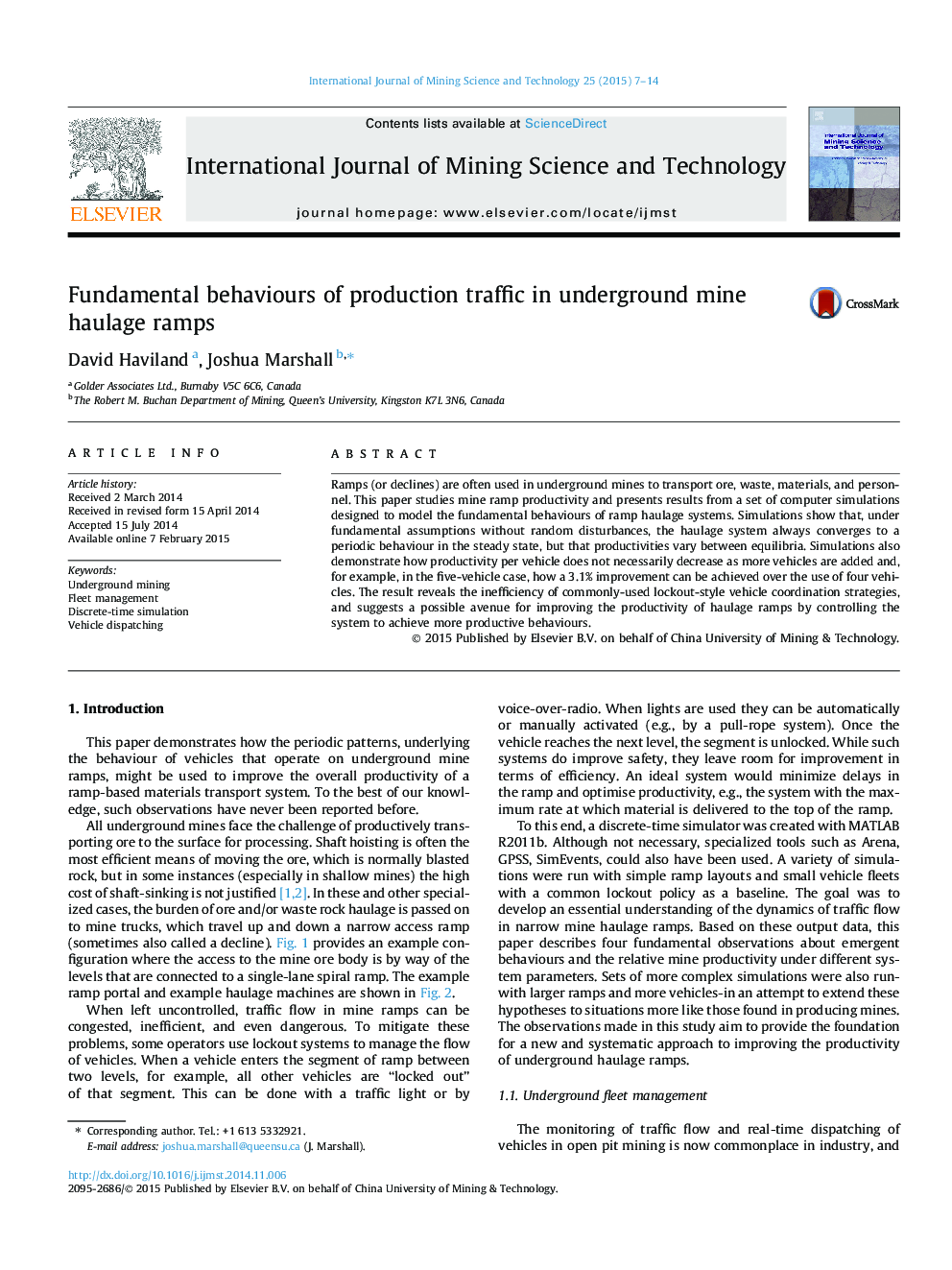| Article ID | Journal | Published Year | Pages | File Type |
|---|---|---|---|---|
| 276468 | International Journal of Mining Science and Technology | 2015 | 8 Pages |
Ramps (or declines) are often used in underground mines to transport ore, waste, materials, and personnel. This paper studies mine ramp productivity and presents results from a set of computer simulations designed to model the fundamental behaviours of ramp haulage systems. Simulations show that, under fundamental assumptions without random disturbances, the haulage system always converges to a periodic behaviour in the steady state, but that productivities vary between equilibria. Simulations also demonstrate how productivity per vehicle does not necessarily decrease as more vehicles are added and, for example, in the five-vehicle case, how a 3.1% improvement can be achieved over the use of four vehicles. The result reveals the inefficiency of commonly-used lockout-style vehicle coordination strategies, and suggests a possible avenue for improving the productivity of haulage ramps by controlling the system to achieve more productive behaviours.
